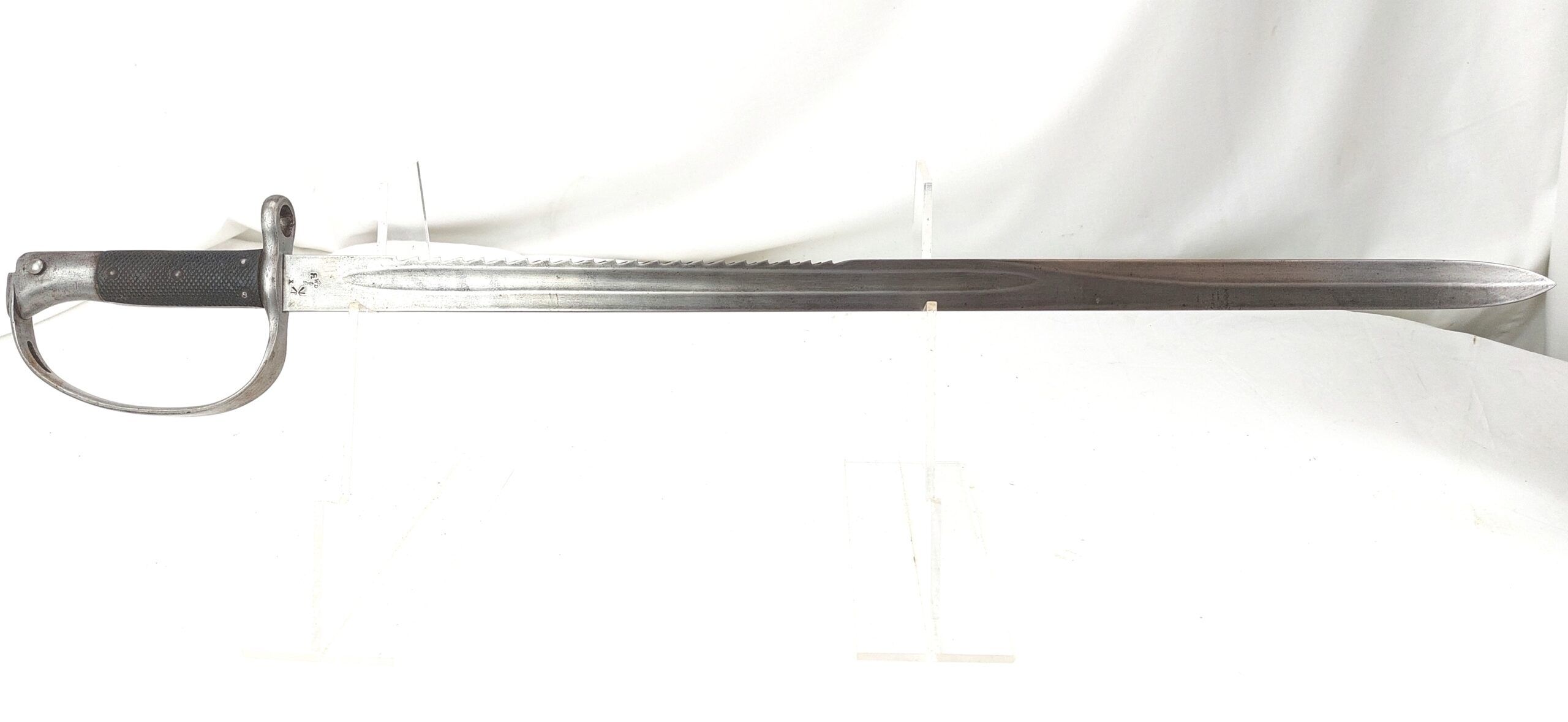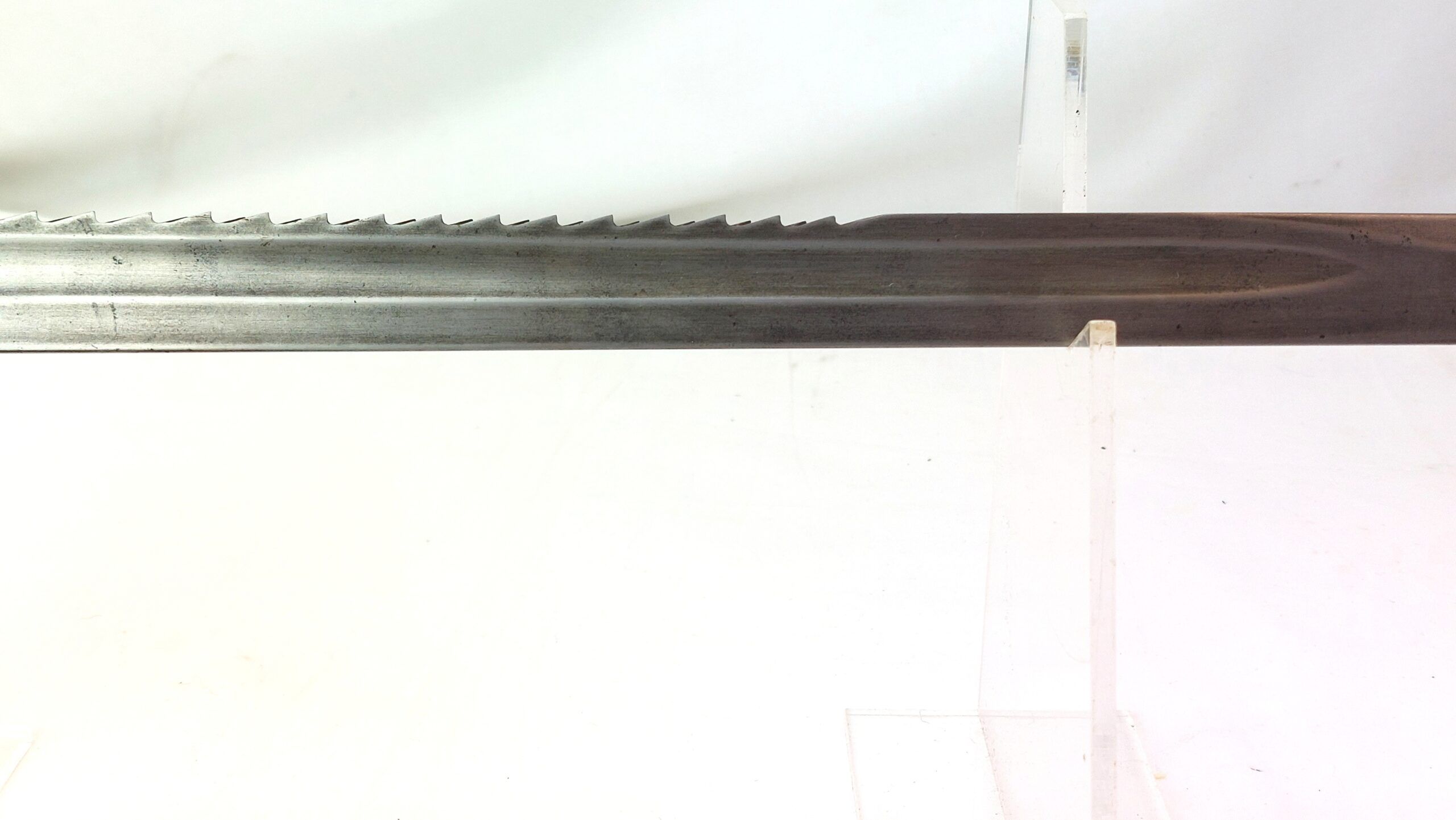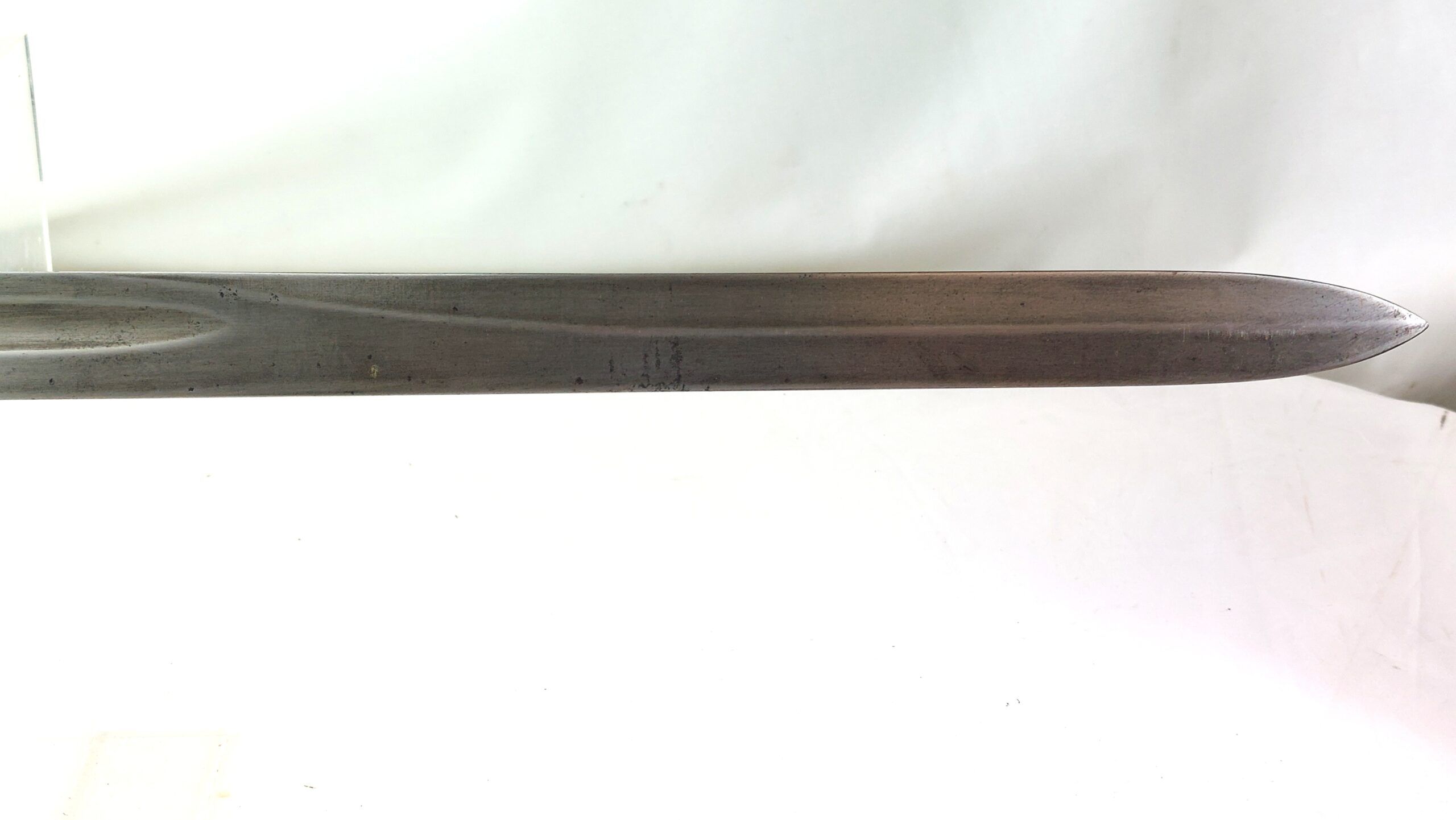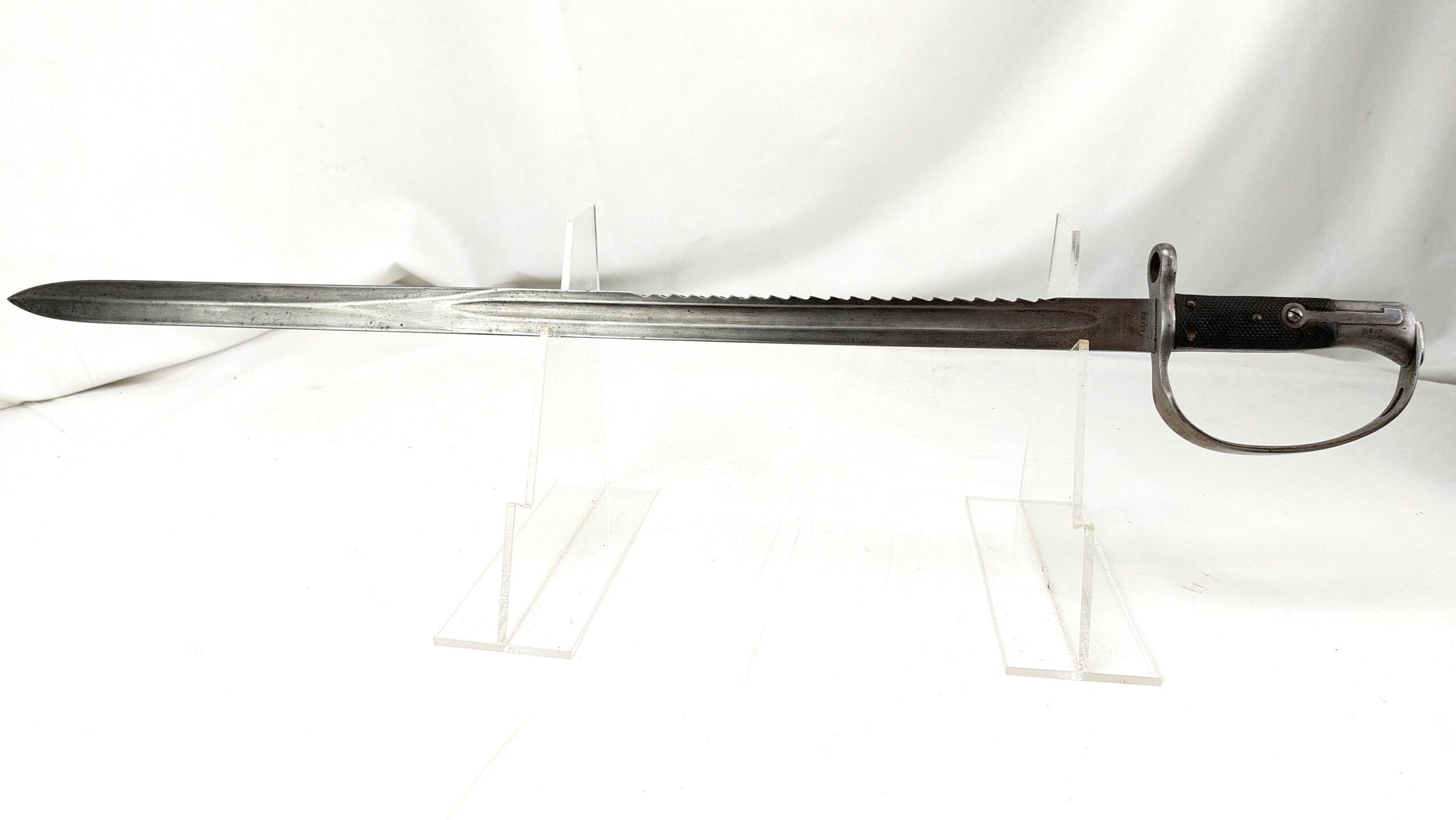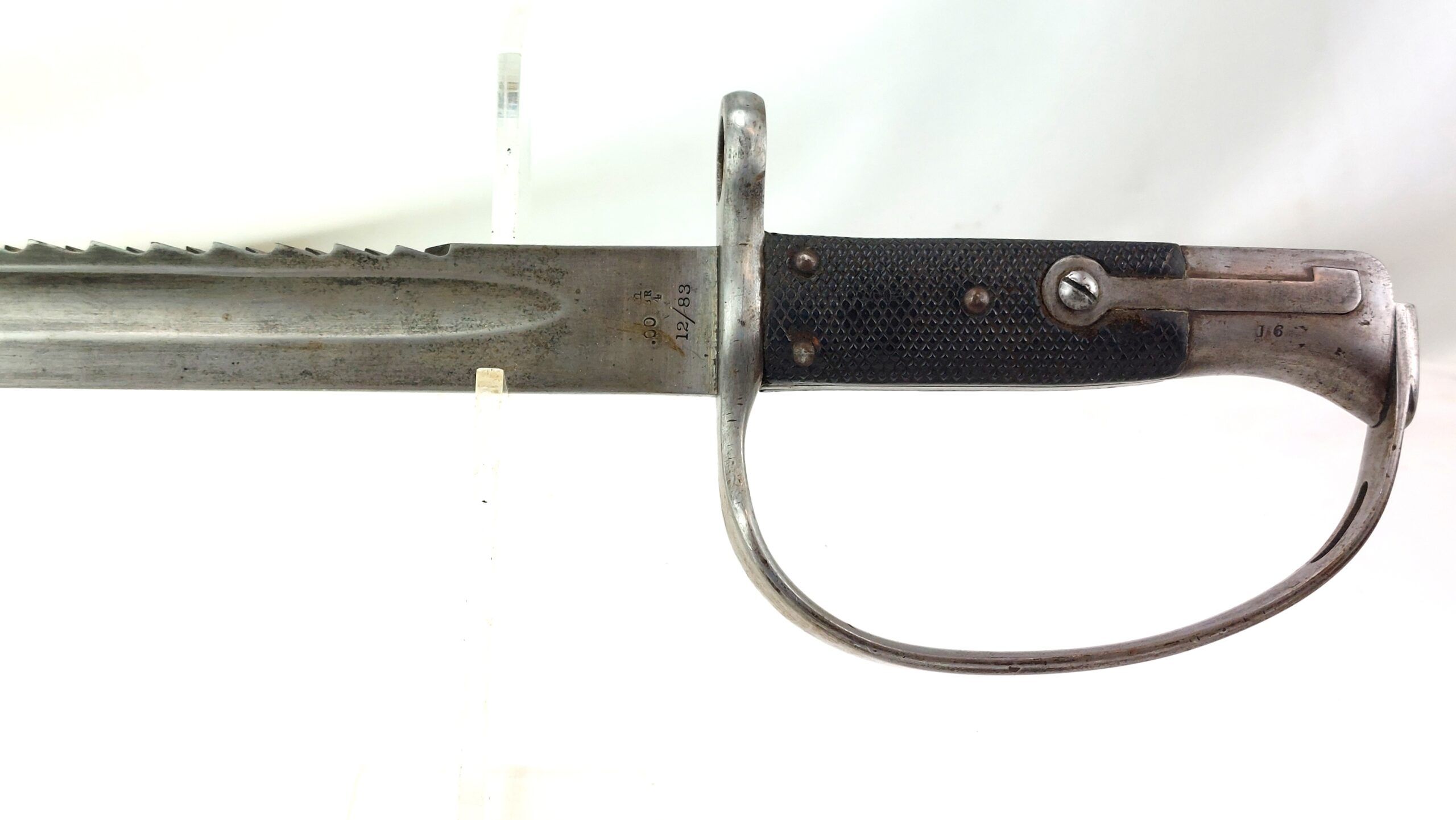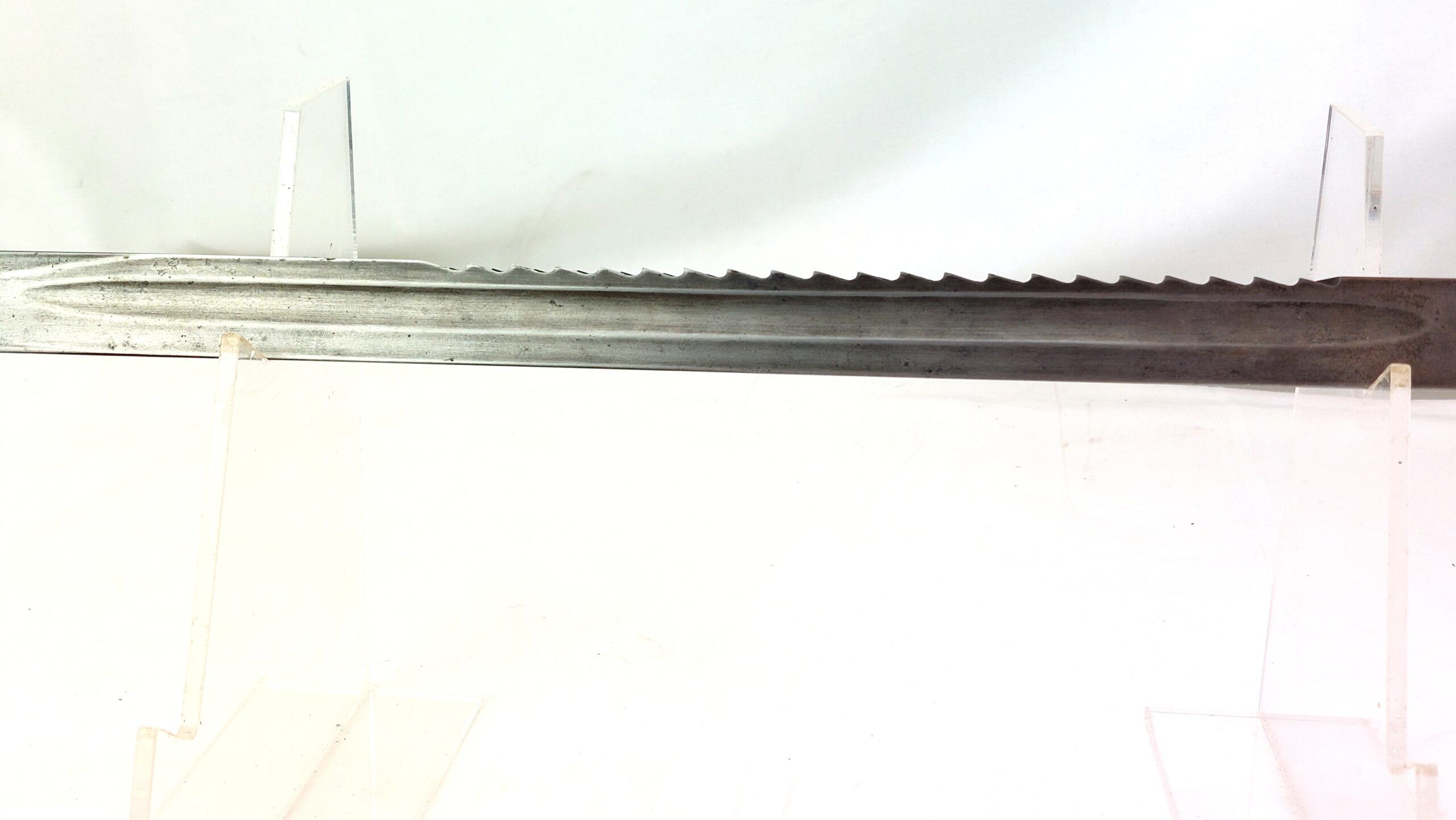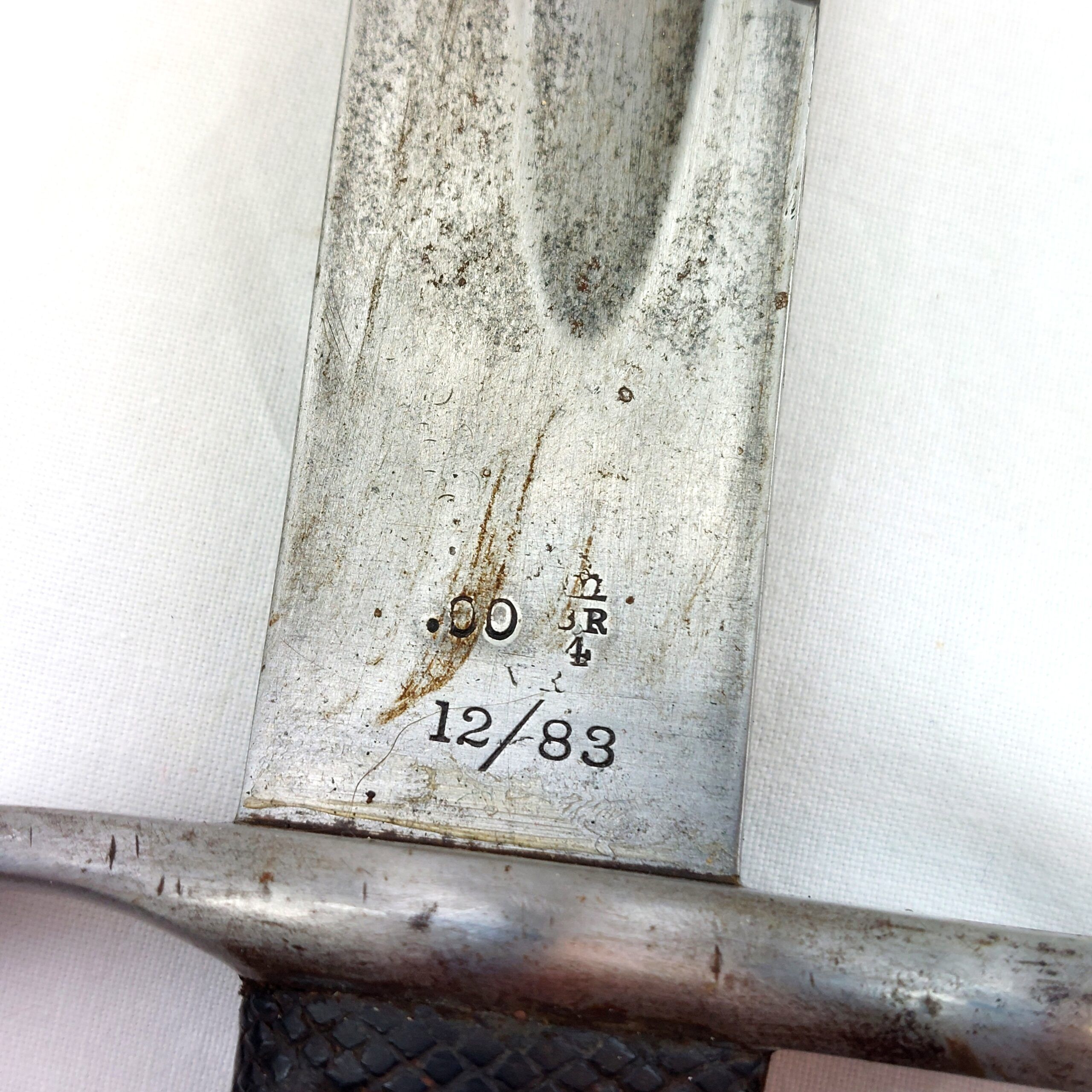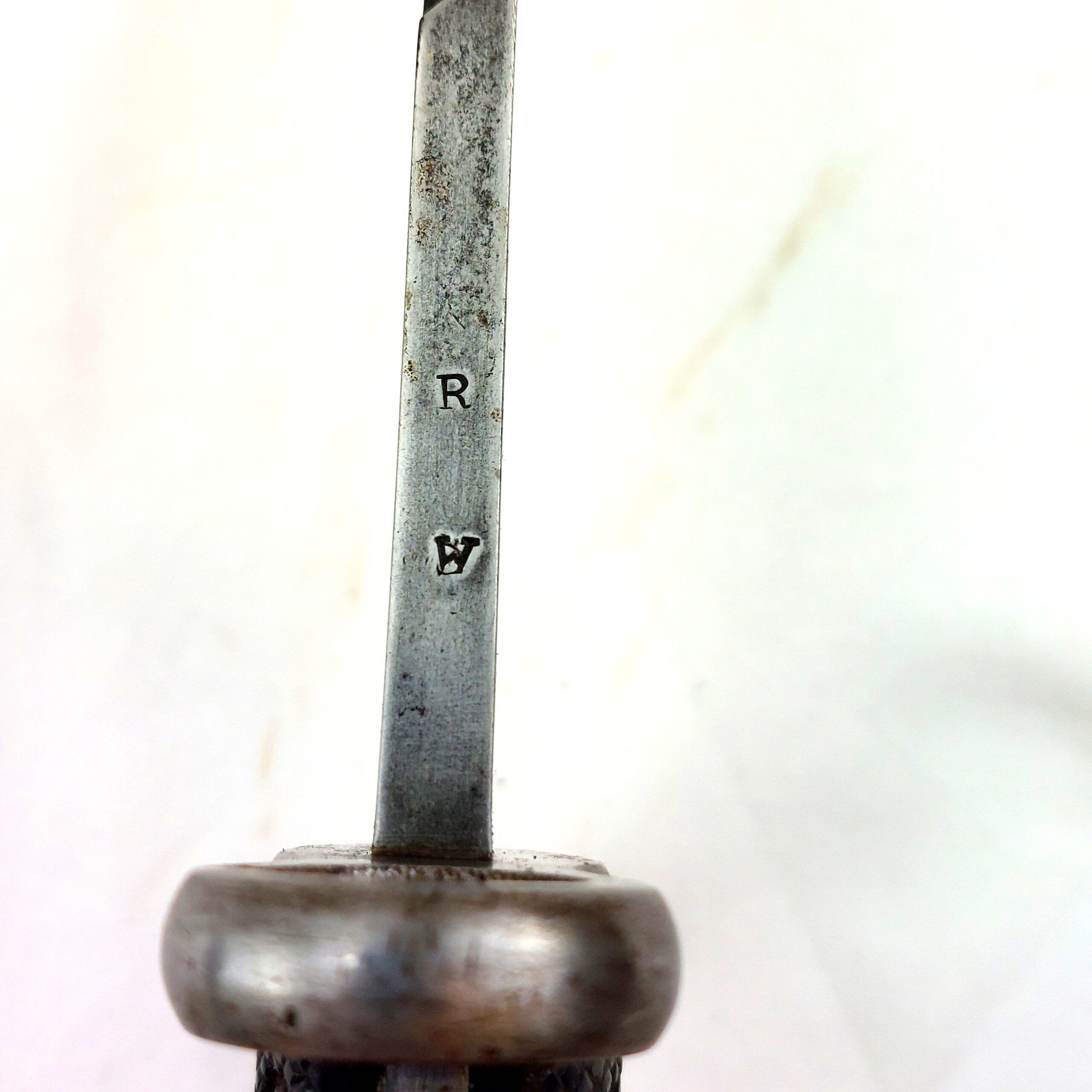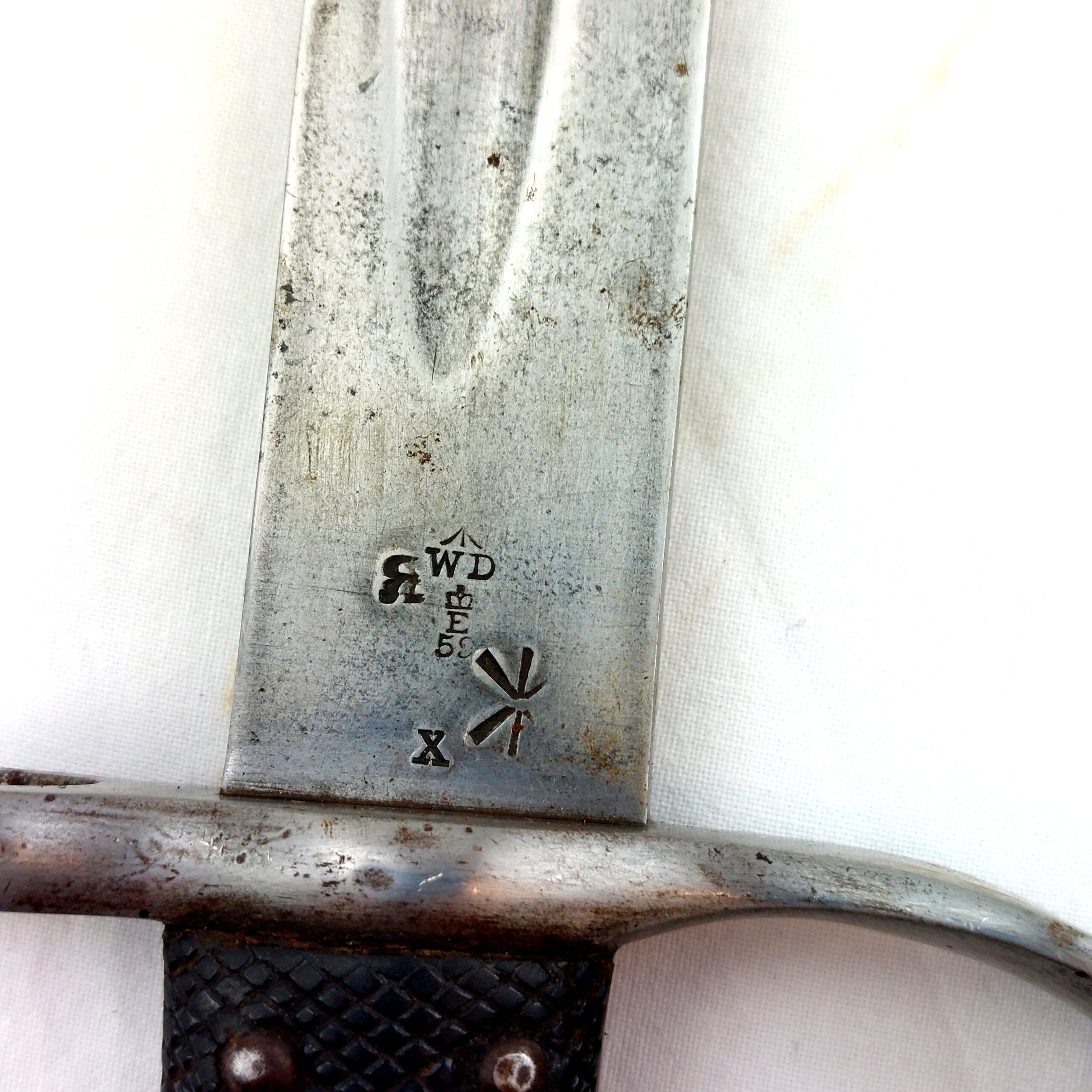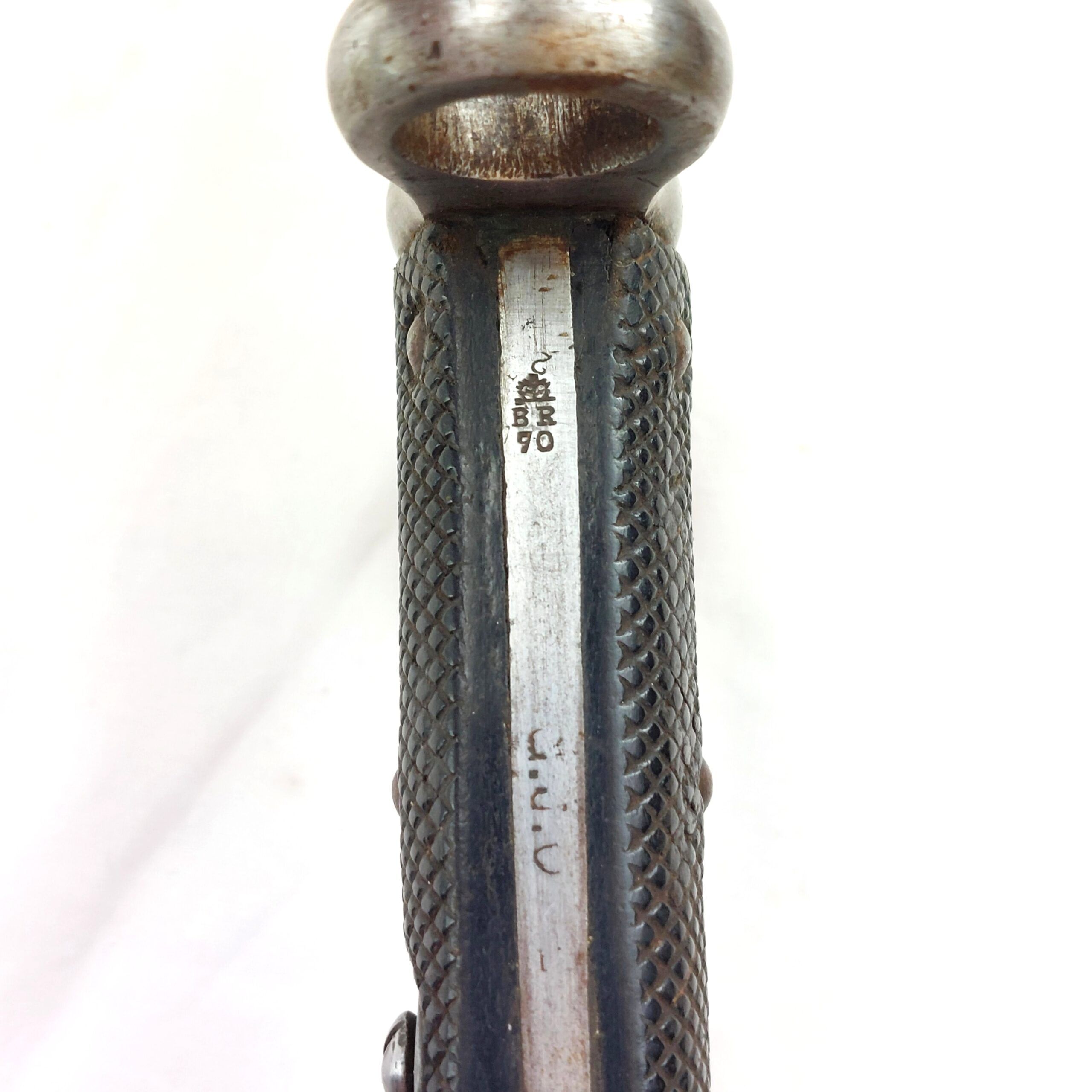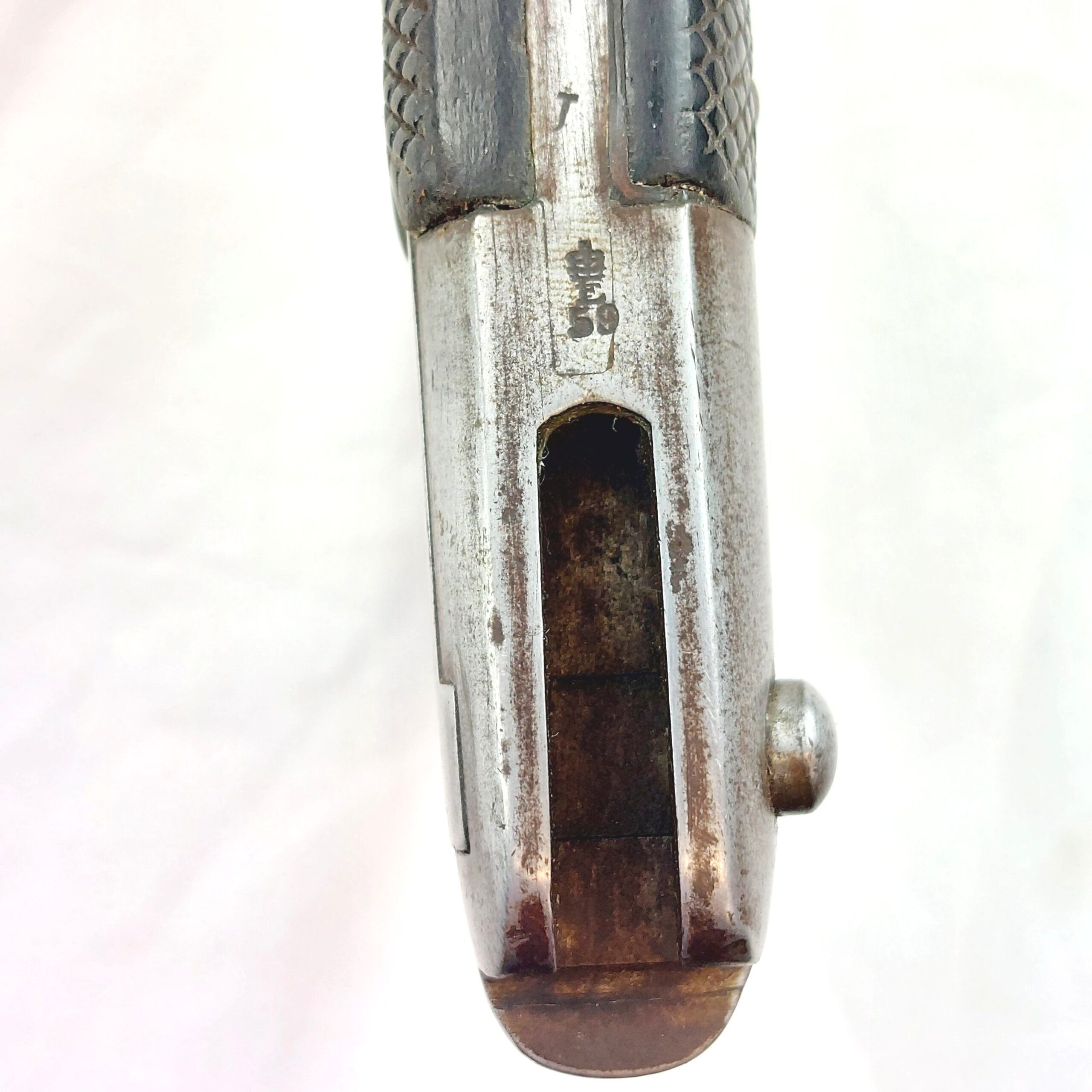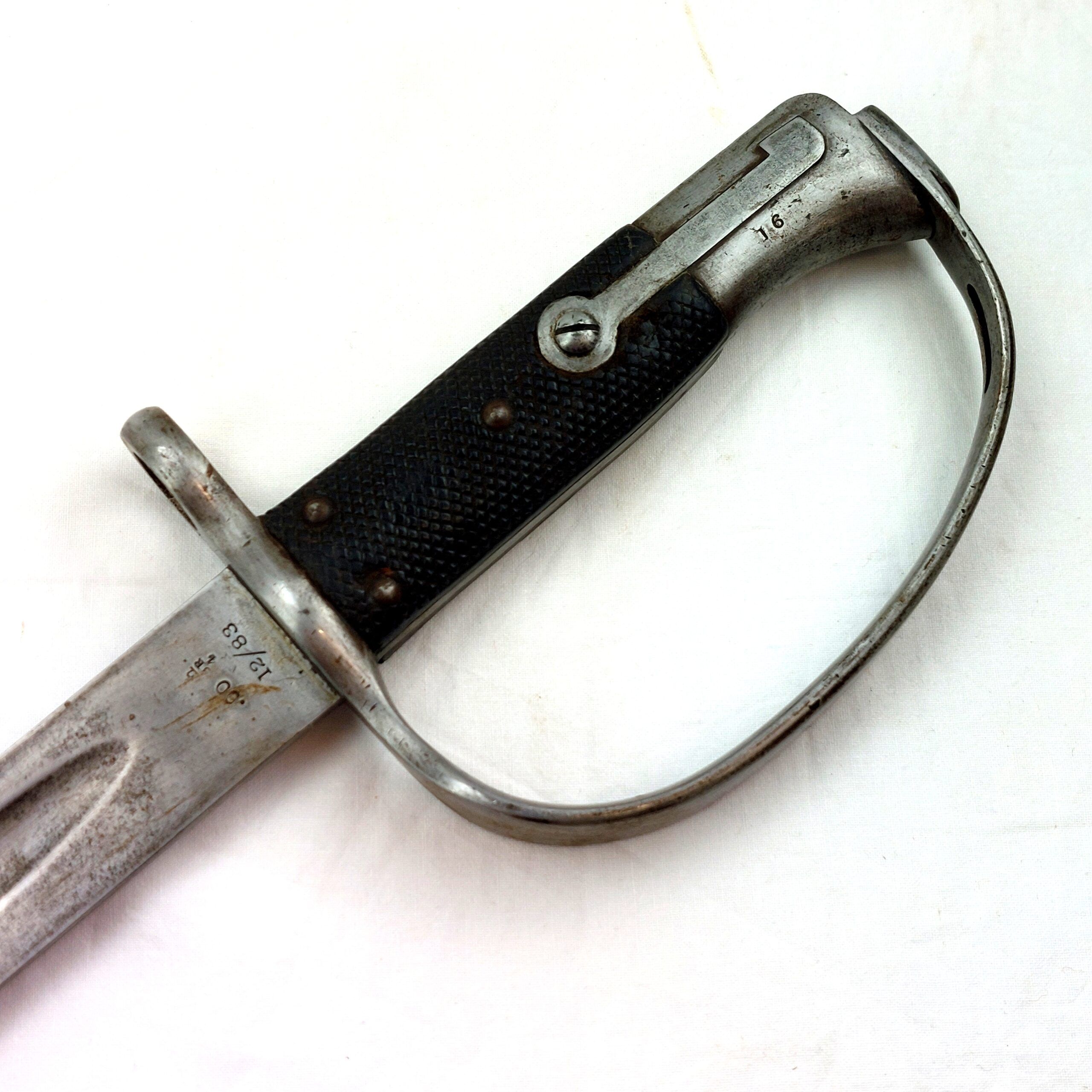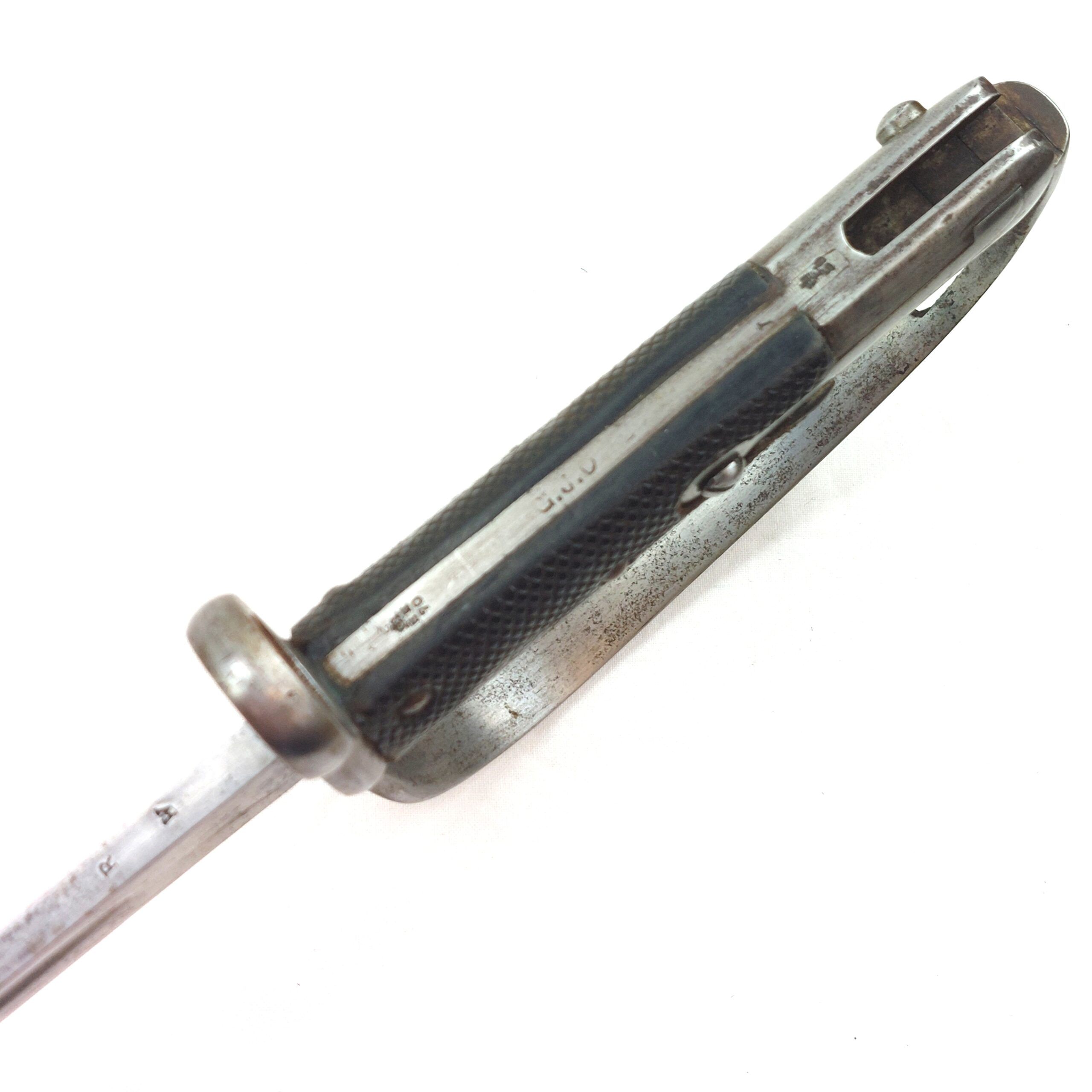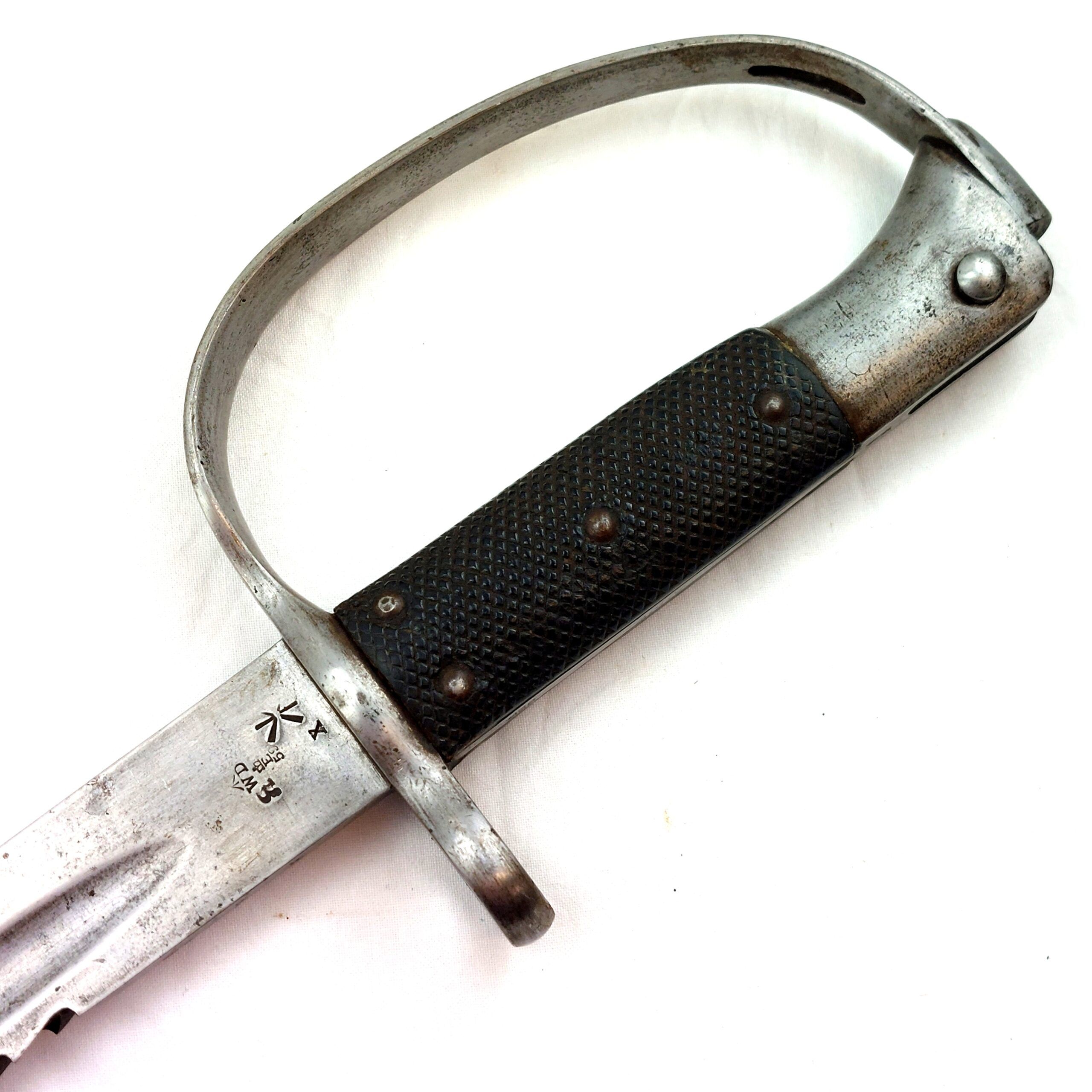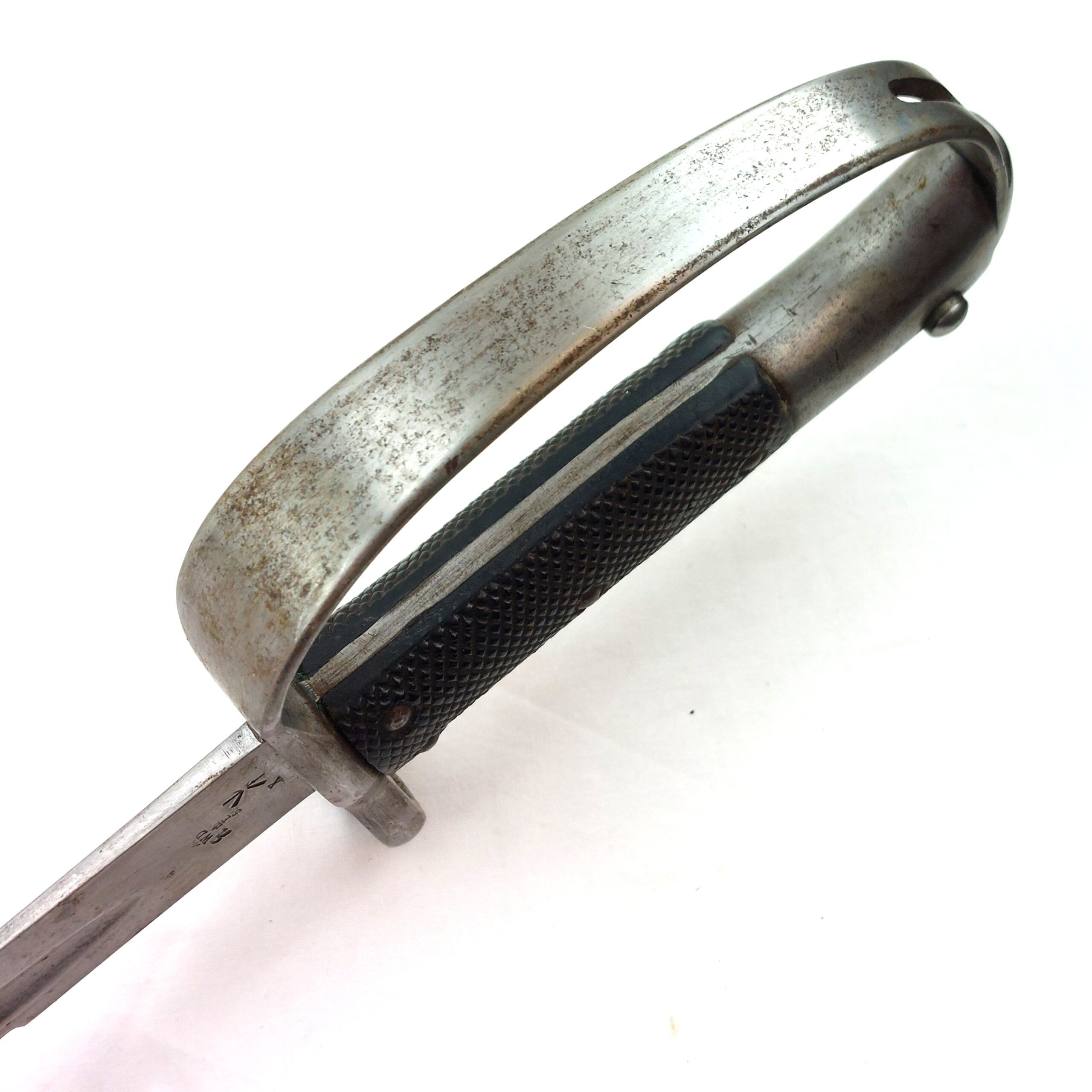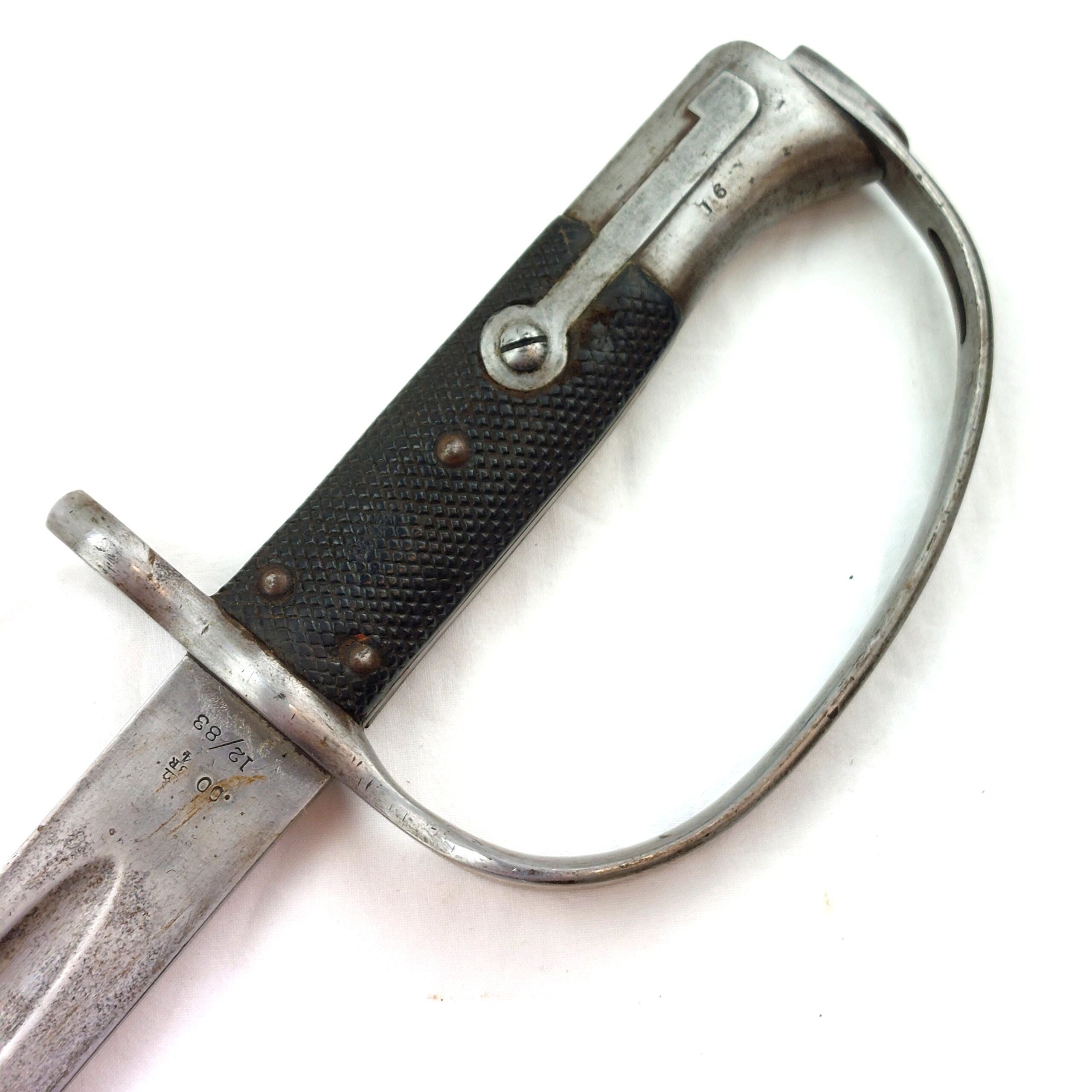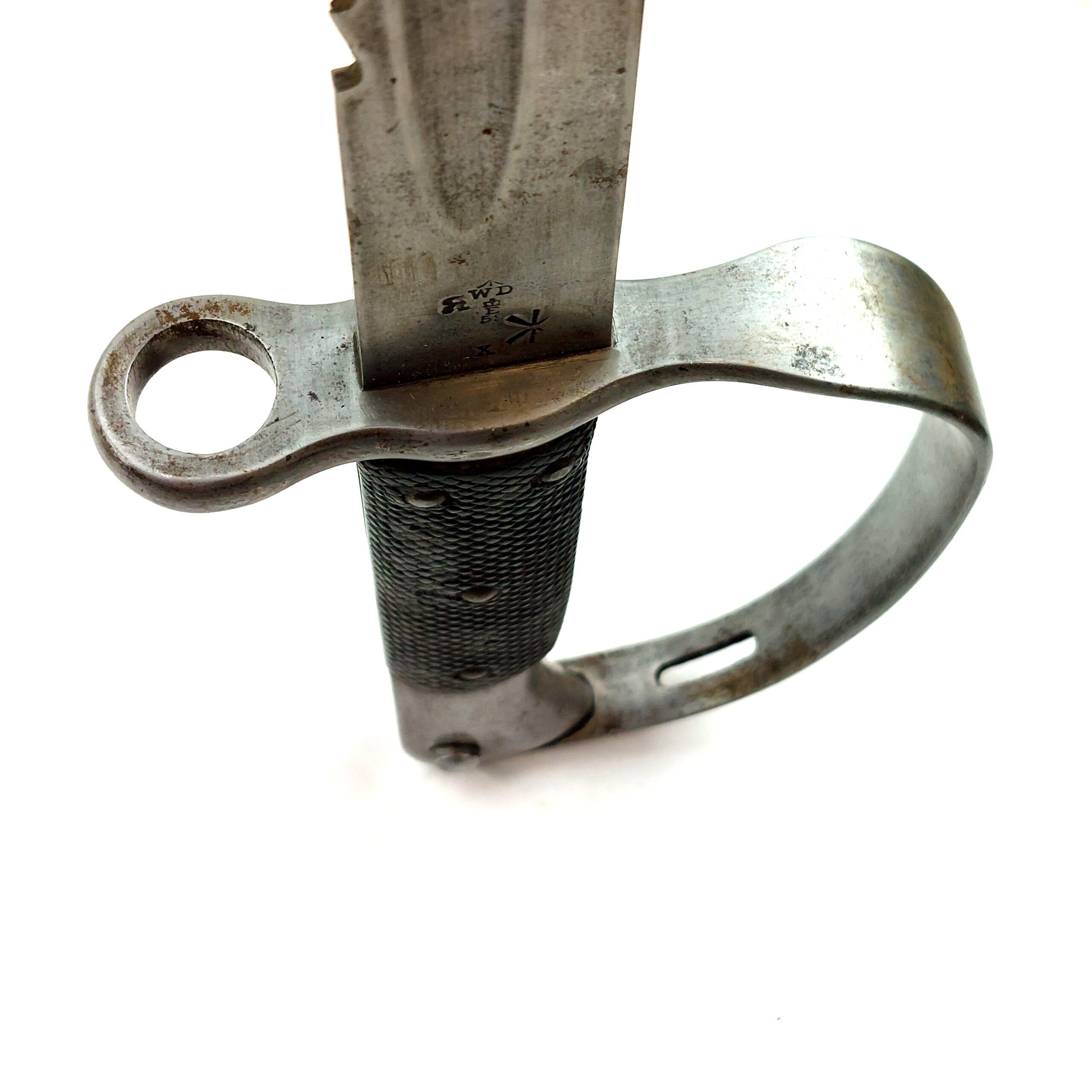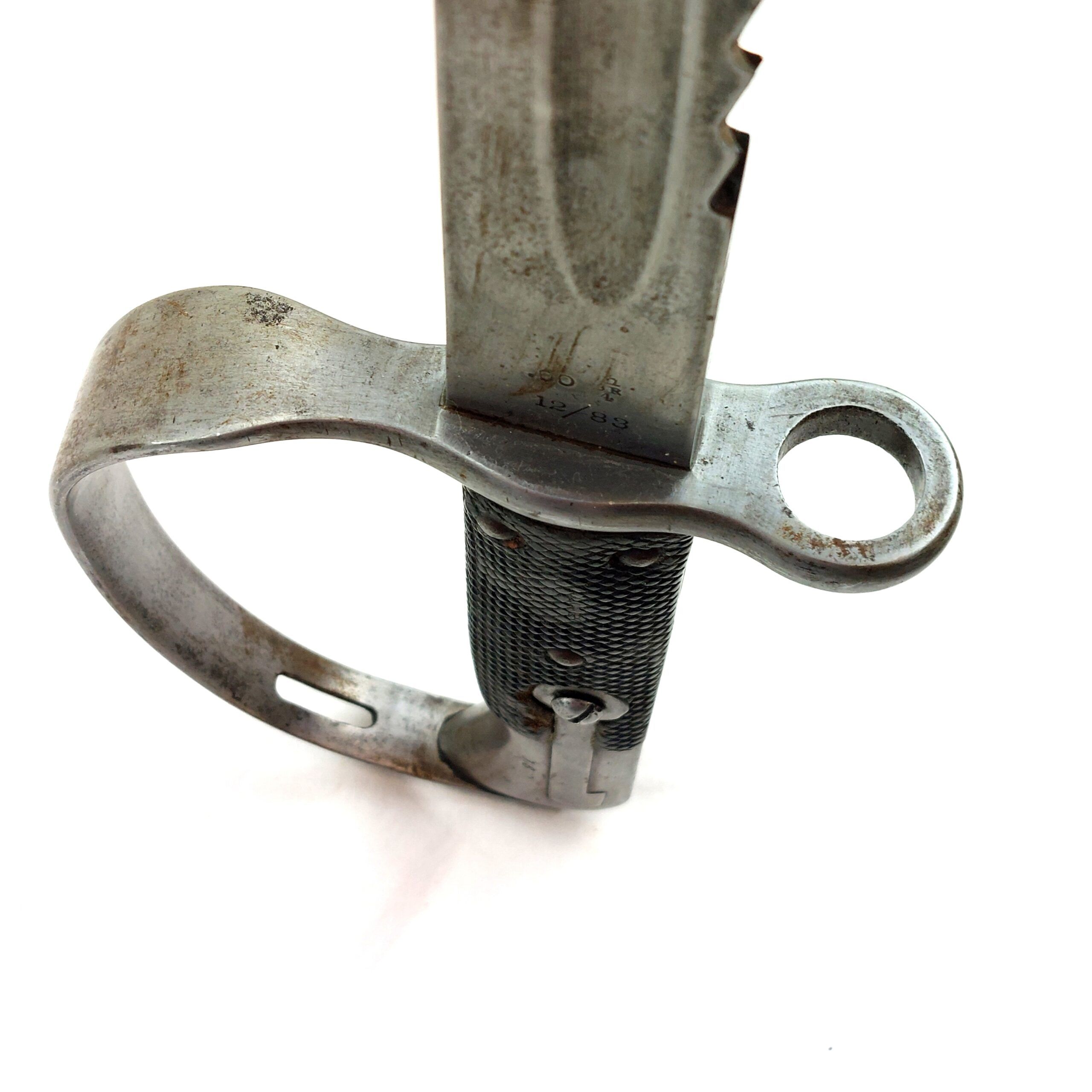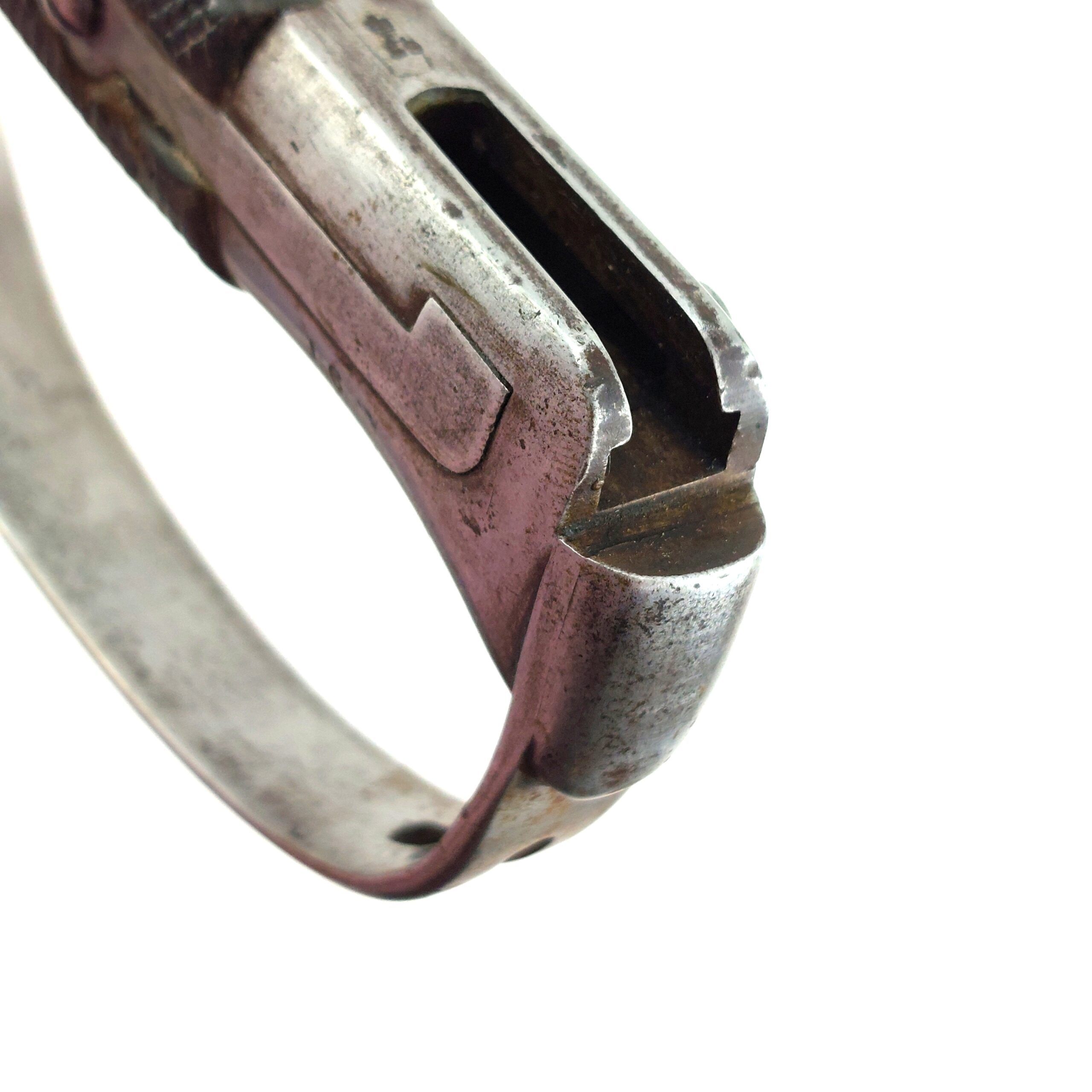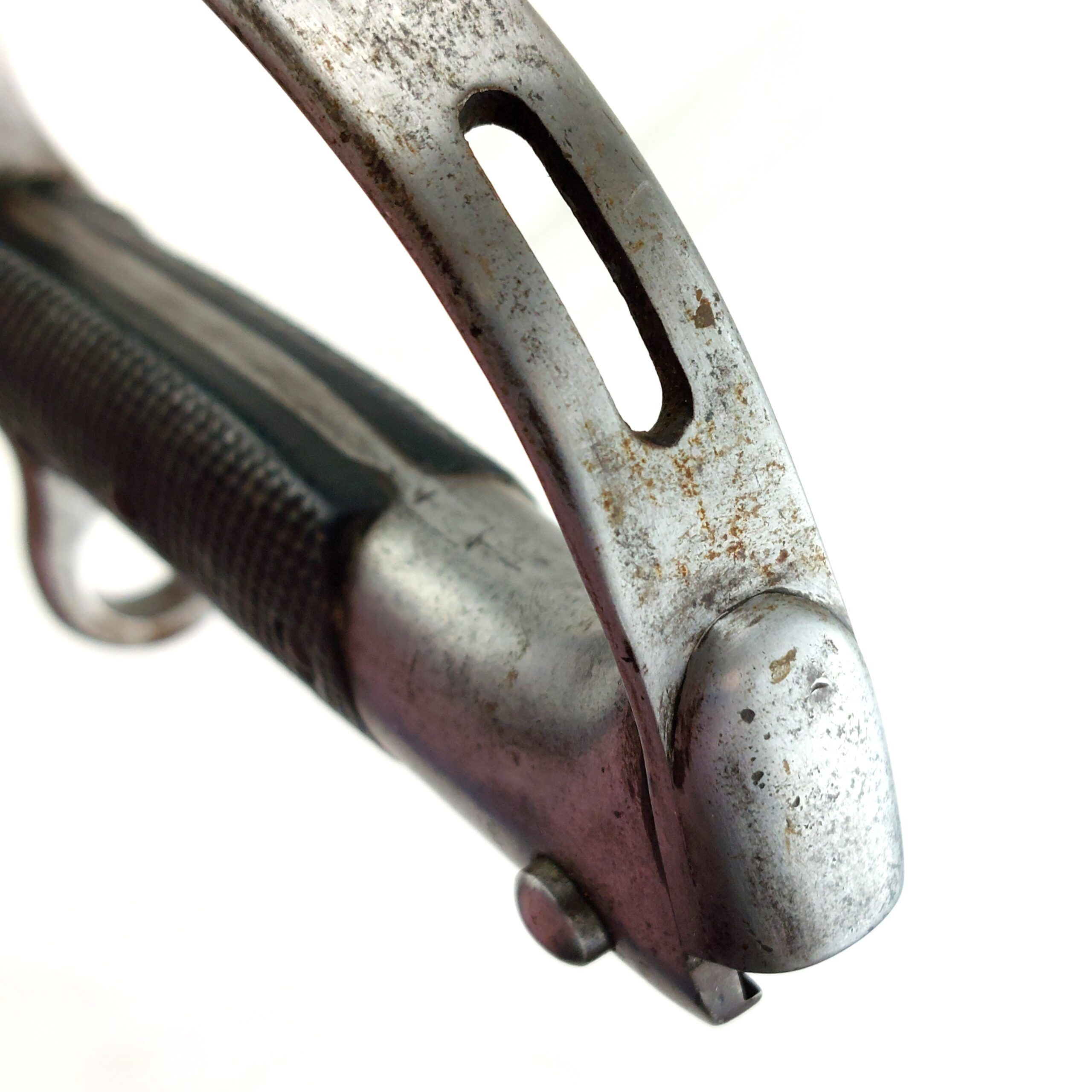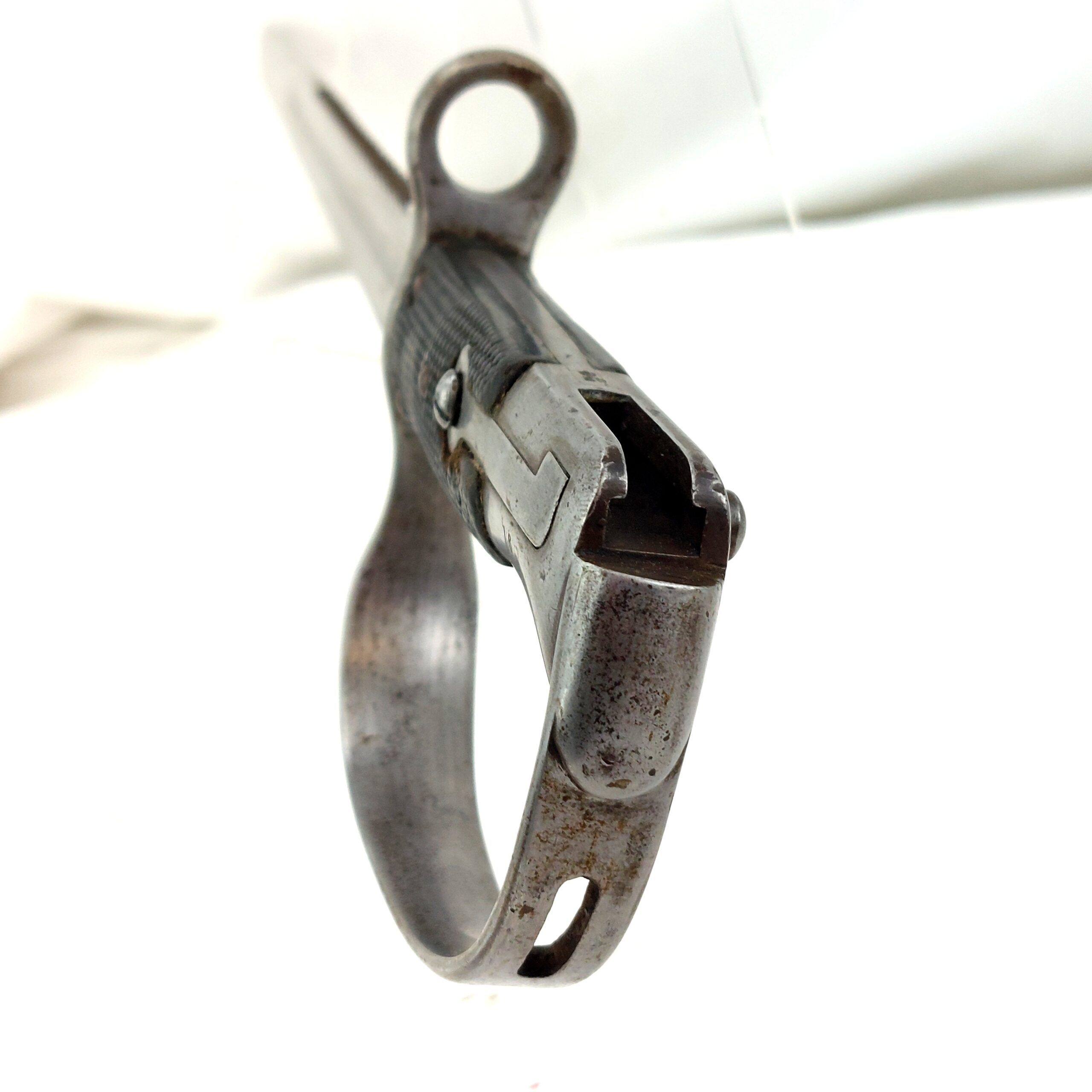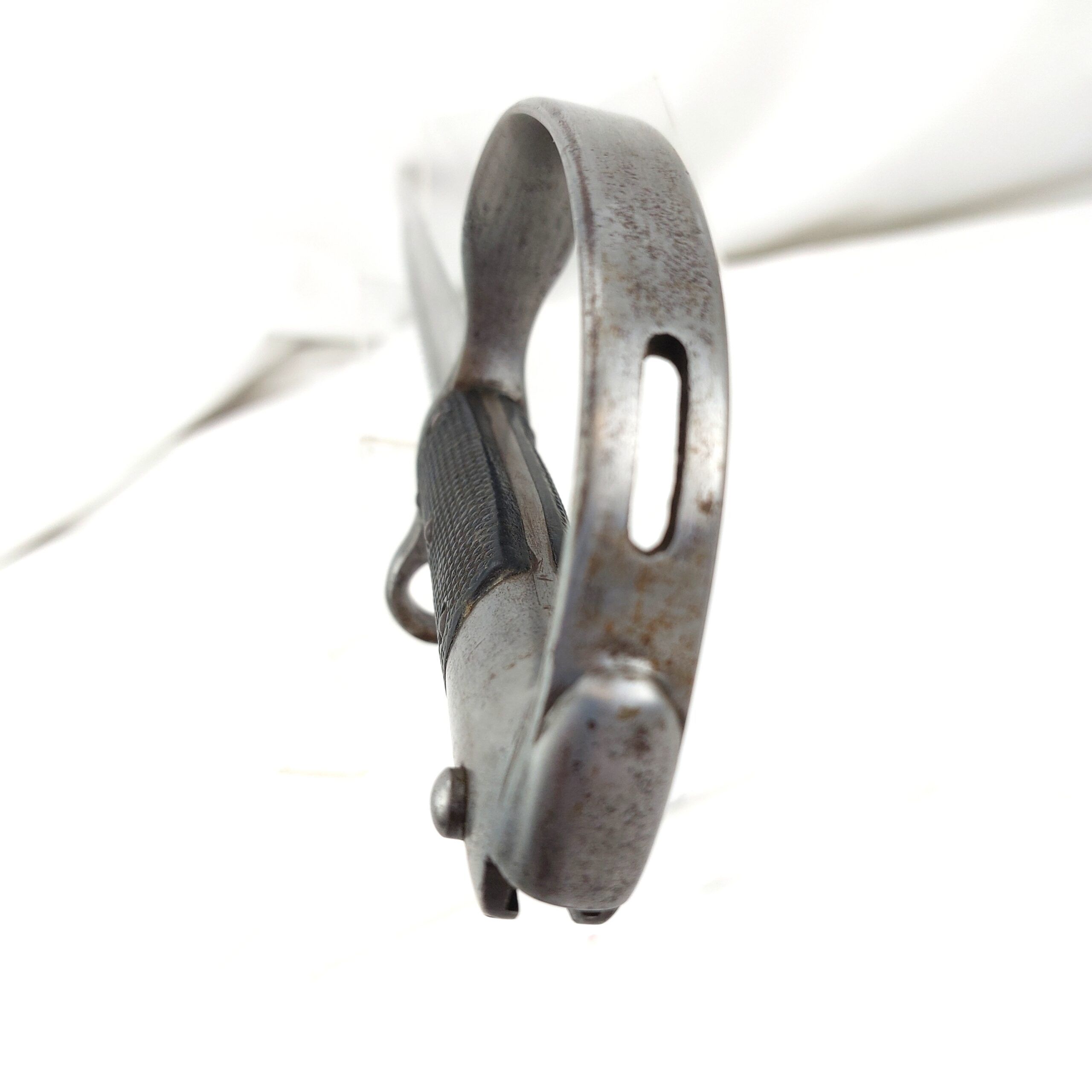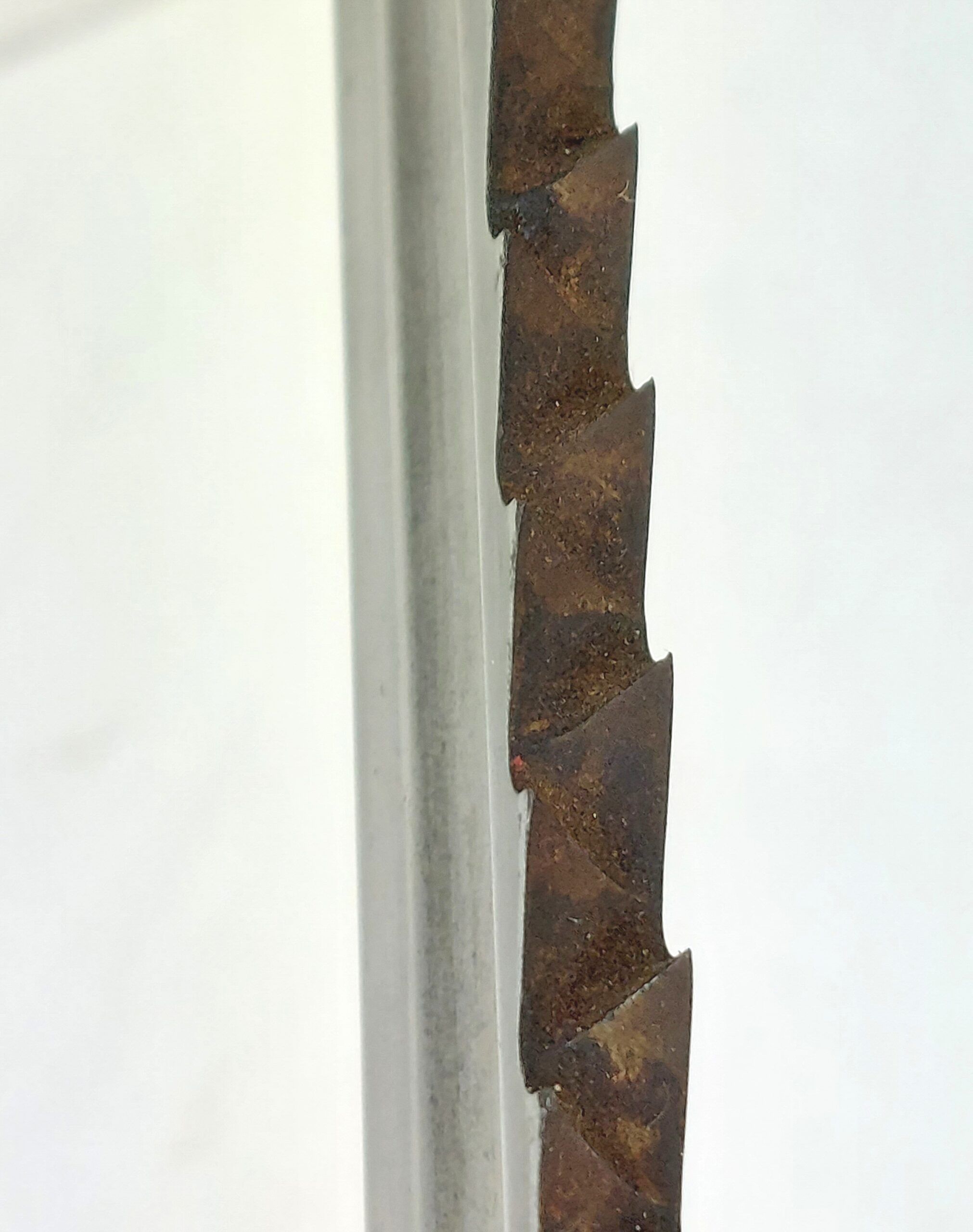*British, 1879 Pattern Saw-backed Sword Bayonet for the Martini Henry Artillery Carbine MK1, Dated Dec 1883*
Marked on ricasso: R – reissue stamp (normally mirrored ‘R’ marking, indicated that the weapon was downgraded, often relegated for Drill Purposes but only half of the R is present here), War Arrow over WD, Crown over E over 59, War arrow over inverted war arrow (decommisioned) over X bend proof mark.
Marked on the obverse: .00, Crown over BR over 4, V.R., 12/83
Spine marked: R and W
Marked on Tang: Crown over BR over 70, “G.J.C”, Crown over 59
Marked on Pommel: J6
This is a fine specimen of an early production, scarce 1879 Pattern sawback bayonet, bearing stamps indicating possible reissue during the Boer War. The sawback bayonet was designed for use alongside the Martini Henry Artillery Carbine. Two bayonet patterns were initially considered, with the final approval given to a 25.75-inch blade sword bayonet featuring a sawback. RSAF Enfield spearheaded the development of both the carbine and the bayonet, initially manufacturing 5,000 of the new carbines in 1878.
Despite their relatively brief official usage period from 1879 to 1900, these artillery swords were extensively deployed in various campaigns including those in India, Afghanistan, Egypt, Sudan, the South African Boer Wars, and China during the Boxer Rebellion. Acting more as swords than bayonets, they served as versatile tools in the field. The saw feature would have been particularly useful for clearing brush, and whether wielded as a sword or affixed as a bayonet, it would have been formidable against any adversary.
With a 65.5cm blade, the sword has a double edge for the last 22cm, terminating in a spear point. It features 20 pairs of offset sawteeth above a short fuller ending with a medial ridge toward the point. The ricasso displays various markings including the War Department stamp, broad arrow, bend test cross, Enfield inspection stamps, and the sold out of service stamp. On the obverse ricasso, there is a faint V.R cypher alongside the manufacture date of Dec 1883. Additionally, there is a Birmingham reissue date of 1900, likely for service during the Anglo Boer War. The sword is equipped with a distinctive steel D-guard and knurled leather grips.
*Condition*
Excellent used condition commensurate with age and service. No scabbard. Please see photographs as part of the condition report.
JAQCOOXDEO_1333160996


